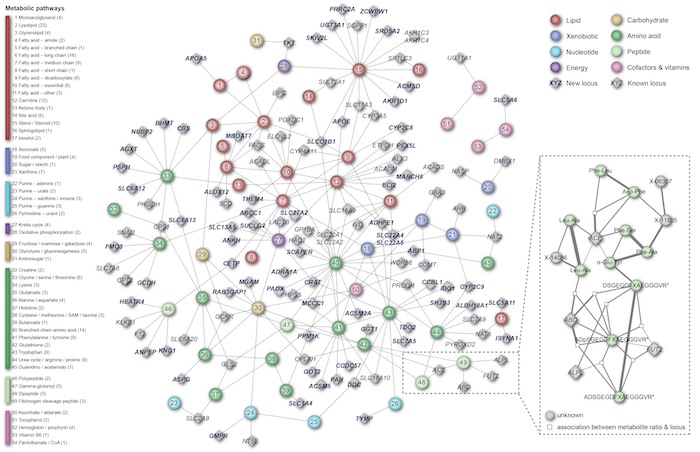Metabolic Map of Human Body Created
May, 2014

It was found that there are 145 genes that have a significant effect on the body’s metabolic capacities.
A huge leap forward has been made by researchers at WCMC-Q have produced a comprehensive atlas identifying the genes that influence how the body keeps our blood levels of sugars, fats and amino acids in balance.
Dr. Karsten Suhre, professor of physiology and biophysics at the college, worked with partners at institutions in Europe to create the map, which has recently been featured in the prestigious Nature Genetics magazine.
A total of 7,824 people took part in the study with the scientists determining 2.1 million genetic variants in each one of those study participants. The researchers then measured the levels of over 400 different small molecules, called metabolites, that are found in the blood of every person. The relation between metabolite levels and differences between every individual's genes was recorded and, through statistical analysis, it was found that there are 145 genes that have a significant effect on the body’s metabolic capacities.
Dr. Suhre said: “Many of the 145 genes we identified are enzymes. Enzymes are there to produce the different metabolites – the sugars, fats and amino acids that are the building blocks the body needs. They also eliminate toxic substances and excess metabolites from our system. Genetically, everyone has these enzymes but no-one is identical in what concerns their genetic make-up, so we’re looking for differences in what an individual's enzymes can do by generating a comprehensive picture of over 400 metabolites for every blood sample we measure.
Essentially, a single genetic difference in the way that an enzyme behaves may have positive or negative benefits for that individual. It may make them more prone to certain diseases or protect them from some illnesses by, for example, efficiently processing a certain vitamin or being unable to process it.
“This is an atlas of how everybody is metabolically different,” said Dr. Suhre. “We can now really understand the genetic part of human metabolism as a whole; that is a first. It has never been achieved to this level before.”
The research has been going on for several years at WCMC-Q with international collaborators, and Dr. Suhre said, the map is the culmination of that, providing an extremely valuable tool for scientists. The map shows the different pathways between genes, enzymes and metabolites, demonstrating that a drug used to target one gene may have several different effects and consequences on other pathways. Perhaps most importantly, it shows how human metabolism works as a system and how it can potentially be modified in order to counteract what a disease has done.
Dr. Suhre said: “To treat a disease, such as diabetes or cancer, if you want to change the levels of a certain metabolite, the map would tell you which enzyme to target, but it would also tell you which other metabolites and enzymes surrounding the target would be affected, so that you can select the right combination of drugs in order to reach a desired effect.”
Dr. Khaled Machaca, associate dean for research at WCMC-Q, said: “This study highlights current efforts and the vision of the WCMC-Q research program to focus on personalized medicine approaches that will allow physicians in Doha in the long term to devise treatment strategies targeted to the individual. This approach is well aligned with Qatar’s 2030 vision to improve the healthcare of the Qatari population.”
To read the study in full visit www.nature.com/ng/journal/vaop/ncurrent/abs/ng.2982.html
